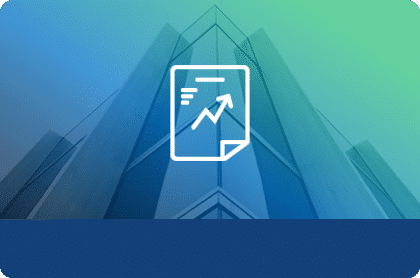BLOGS
Applying ASC 842: The Voice of Experience

Topic ASC 842 Leases, specifies how a business reporting under US-GAAP will recognize, measure, present and disclose leases in its financial statements.
The standard provides a single lessee accounting model, requiring lessees to recognize assets and liabilities for all leases unless the lease term is 12 months or less or the underlying asset has a low value in which cases exemptions are an option.
For accounting periods beginning on or after 01/01/2019 compliance with ASC 842 was mandatory for Public Companies in the USA and is necessary whatever the volume of leases. Now it is the time for private companies and why shouldn’t they gain from the path trodden already in implementing ASC 842. The task of transitioning a lease portfolio to this new world, whilst challenging, can be not only beneficial to a business with improved forecasting, managing and reporting but also have a positive impact on how a business is viewed by lenders, stakeholders and investors against other enterprises of its size in its sector through improved transparency and defined reporting standards.
This article will introduce you to Innervision’s lease accounting solution, LOIS Lease Accounting (LLA). A cloud-based application that has been specifically designed to address the accounting requirements of the IFRS 16 and ASC 842 standards. Today, the solution is relied upon by over 160 corporate entities globally and has a user-base in over 100 countries and housing in excess of 160,000 leases, with a combined value of over €90 billion. These entities depend on LLA to help ensure compliance with the new accounting standards.
Having worked on a myriad of implementations and having helped countless organisations meet their ASC 842 compliance objectives, we are well aware of the pitfalls that businesses have run into and the erroneous assumptions they have encountered during the path to compliance. Here we highlight and demonstrate the experiences gained and solutions offered as a result of numerous transition projects.
- Businesses have failed to understand the resource required and found that without a dedicated team, appointed leader and internal support compliance targets have not always been met.
- Who are the leases with, how many are there and what are the assets associated with them? This work has so often been completely under-resourced and as a result, it often takes longer to find, collate and upload the information into a database that might serve as an accessible and functional repository.
- Furthermore, not all lease contracts when collated were actually lease contracts under the new ASC 842 standard – Many organisations had to analyse agreements and break out the service elements.
- Are any of your service contracts actually lease contracts? Entities also discovered service contracts that had embedded assets and conveyed the right to use and control of those assets. Preparers must anticipate such scenarios and develop plans for identifying these contracts.
- Organisations realized that to effectively meet the complex compliance requirements of ASC 842 and to help ensure the accuracy and integrity of their financial statements were maintained, they'd need to implement lease accounting software to generate the requisite accounting calculations, disclosures, and reports in line with the new standard.
- Things such as borrowing rates, exemptions, available expedients all need careful consideration.
- Redefining leases as a series of “right of use assets” required in an ideal world the original individual cost of the associated asset – not always available but necessary to manage through.
- Processes may not have been in place when a business embarked on compliance, but it was quickly learnt that systems and processes designed in advance and refined along the way stand a business in good stead going forward from the perspective of every angle – journal creation, financial disclosures, asset management and lease terminations.
- Keeping everyone informed proved critical and crucial – management, investors, lessors, lenders and other stakeholders – the financial statements will be affected and a policy of no surprises pays off.
- Entities that have already transitioned have realized that lease accounting software is able to provide benefits that go beyond compliance. Such as enhanced portfolio viability, improved efficiency
- and productivity, a more coherent audit process and smarter financial decision making.
Facing Up To The Challenge - Learn from the Experience of Others
- appoint a team to or take ownership of the compliance challenge.
- involve treasury, finance, business units, real estate, IT and procurement.
- take time to look at external resources and software options such as LOIS Lease Accounting.
- speak with other businesses that have accomplished compliance.
- consult with you auditors and leasing consultancies such as Innervision Management.
- Request a demo today to discover how lease accounting software will help with your compliance project and ongoing reporting requirements.
The number of leases recorded on balance sheets will certainly increase upon ASC 842 compliance. However, interested parties and internal/external stakeholders, if kept informed should not be alarmed. The transition to ASC 842 has already been performed and experienced throughout the US-GAAP reporting world and the hard work undertaken by others will have spin-offs that can be enjoyed by businesses transitioning today.










